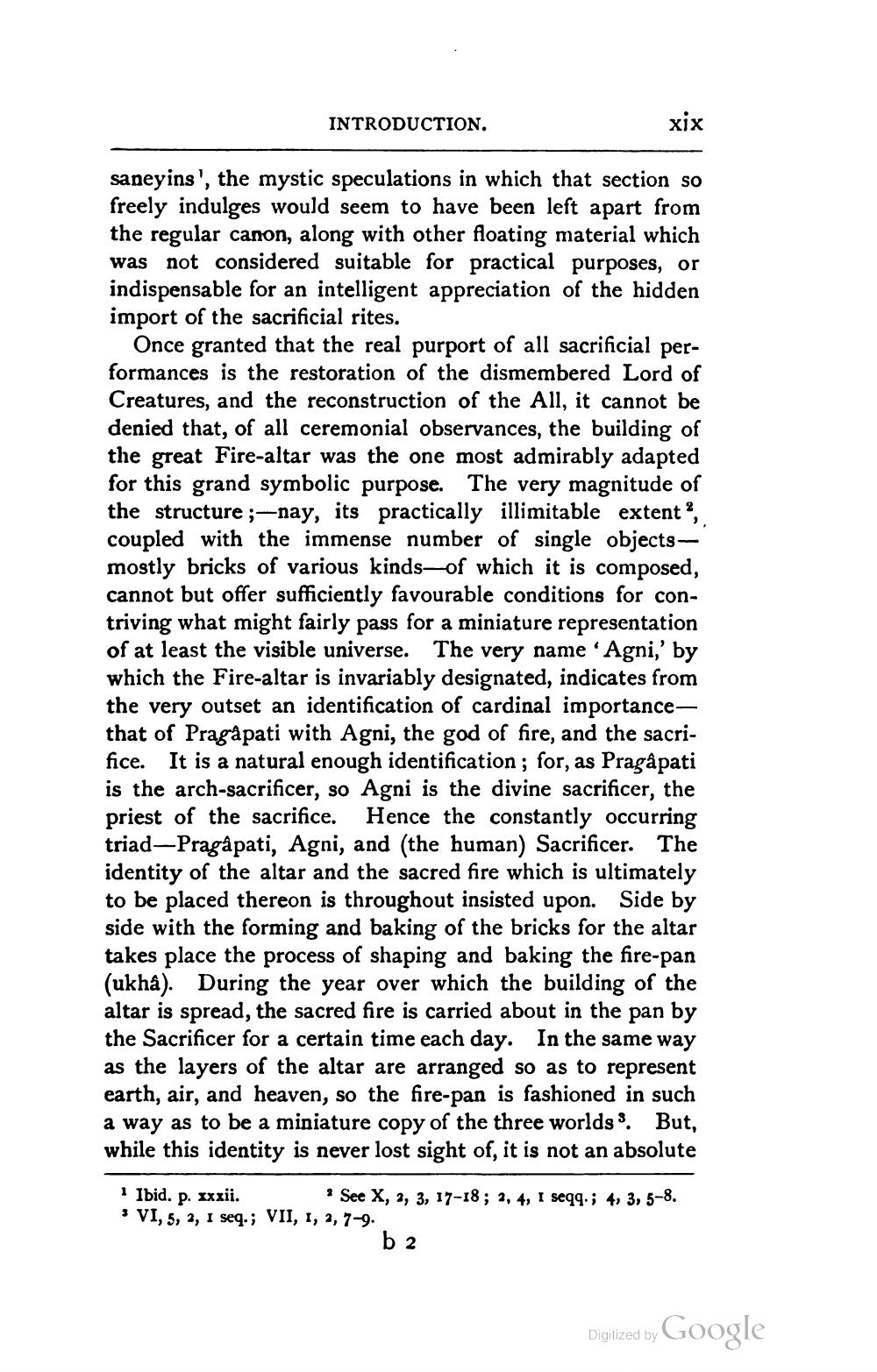________________
INTRODUCTION.
xix
saneyins', the mystic speculations in which that section so freely indulges would seem to have been left apart from the regular canon, along with other floating material which was not considered suitable for practical purposes, or indispensable for an intelligent appreciation of the hidden import of the sacrificial rites.
Once granted that the real purport of all sacrificial performances is the restoration of the dismembered Lord of Creatures, and the reconstruction of the All, it cannot be denied that, of all ceremonial observances, the building of the great Fire-altar was the one most admirably adapted for this grand symbolic purpose. The very magnitude of the structure ;-nay, its practically illimitable extent, coupled with the immense number of single objects-- mostly bricks of various kinds of which it is composed, cannot but offer sufficiently favourable conditions for contriving what might fairly pass for a miniature representation of at least the visible universe. The very name 'Agni,' by which the Fire-altar is invariably designated, indicates from the very outset an identification of cardinal importancethat of Pragàpati with Agni, the god of fire, and the sacrifice. It is a natural enough identification; for, as Pragâpati is the arch-sacrificer, so Agni is the divine sacrificer, the priest of the sacrifice. Hence the constantly occurring triad-Pragapati, Agni, and (the human) Sacrificer. The identity of the altar and the sacred fire which is ultimately to be placed thereon is throughout insisted upon. Side by side with the forming and baking of the bricks for the altar takes place the process of shaping and baking the fire-pan (ukha). During the year over which the building of the altar is spread, the sacred fire is carried about in the pan by the Sacrificer for a certain time each day. In the same way as the layers of the altar are arranged so as to represent earth, air, and heaven, so the fire-pan is fashioned in such a way as to be a miniature copy of the three worlds'. But, while this identity is never lost sight of, it is not an absolute
Ibid. p. xxxii.
See X, 2, 3, 17-18; 2, 4, I seqq.; 4, 3, 5-8. • VI, 5, 2, I seq.; VII, 1, 2, 7-9.
b
2
Digitized by Google




